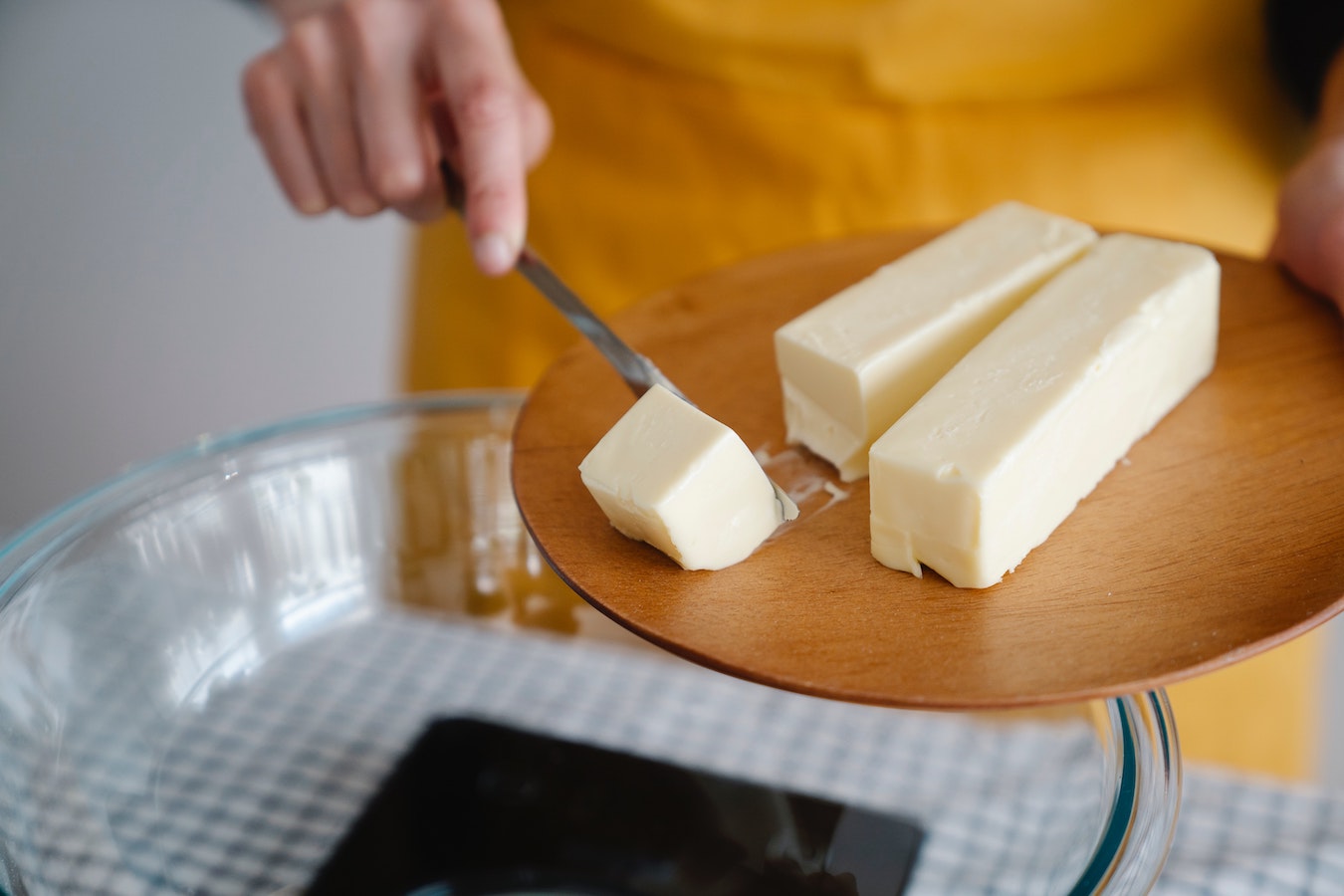
Baking With Brown Butter
by Nea ArentzenIf you’re a baker (or enjoy scrolling the internet for new recipe ideas), you might’ve noticed recipes with brown butter popping up everywhere you look; brown butter cookies, brown butter brownies, and brown butter pasta recipes. And although brown butter can sound intimidating, it’s a very simple ingredient that’s much easier to make than one might think. It can be used to elevate the flavors and textures of baked goods, providing a rich, nutty, and distinctive aroma and taste, and has become a popular ingredient in baking. In this article, we’ll explore the science behind brown butter, its impact on baked goods, and tips for baking with it.
What is Brown Butter?
In simple terms, brown butter is butter that has been heated until the milk solids turn a golden brown color and has a nutty and caramel-like flavor. The process of browning butter is easy, but it does require some patience and attention. It involves melting the butter in a saucepan over medium heat, allowing the water content to evaporate, and caramelizing the milk solids. The result is a fragrant, nutty-tasting butter that can be used in a variety of ways.
The Science Behind Brown Butter
The chemical reaction that occurs during the browning process of the milk solids is what gives brown butter its unique flavor, color, and aroma. As the butter heats up, the milk solids undergo the Maillard browning, which is a chemical reaction between amino acids and reducing sugars (Americas Test Kitchen). This reaction creates new flavor compounds that give brown butter its nuttiness and toastiness.
When browning butter, it’s important to control the heat to prevent burning and to ensure optimal flavor development. The milk solids can quickly go from golden brown to burnt if the heat is too high, so it’s essential to keep a close eye on the butter as it cooks.
How it Affects Flavor, Aroma, and Texture of Baked Goods
With its nutty undertones and caramel notes, brown butter can add a lot of depth, richness, and complexity to the flavor of baked goods. It can complement various desserts, such as cookies, cakes, and pastries, and is a great trick to keep up your sleeve if you want to elevate a simple recipe. Although it’s more commonly used in baking, brown butter can also be used in savory dishes, such as sauces, risotto, and pasta dishes.
With that being said, brown butter doesn’t always have the same positive effects when it comes to texture and moisture. “When butter browns, the water within it evaporates. This is why baked goods made with brown butter often turn out dry — they simply don’t take into account the water lost during browning”, says Jesse Szewczyk from the Kitchn. A rule of thumb seems to be to add 1 tablespoon of water back into the recipe for every 1 stick of butter used (recipes that originally call for brown butter usually already account for this in the instructions).
Substituting Brown Butter in Recipes
Brown butter can be used as a substitute for regular butter in almost all recipes. However, when doing so, it’s important to account for the higher fat content of the butter and adjust the liquid ingredients accordingly (as mentioned above). Additionally, if you use too much brown butter without taking the other ingredients into consideration, your baked goods could turn out slightly greasy (you may want to start by using half regular butter, half brown butter).
It’s also important to note that brown butter has a lower smoke point than regular butter, which means it will brown quicker and can’t handle as much heat.
Tips and Tricks for Using Brown Butter
Here are a few tips to successfully browning butter at home:
- Achieving the perfect brown butter requires careful temperature control and observation of color changes. Keep the heat low, be patient, and stir occasionally.
- It’s important to strain the brown butter to remove any burnt milk solids and ensure a smooth texture.
- Brown butter can be stored in the refrigerator for up to two weeks or in the freezer for up to six months.
- Start with cold butter. This will help to prevent the butter from splattering when you melt it.
- Cook the butter over low heat. This will help to prevent it from burning.
- Stir the butter frequently as it cooks. This will help to prevent it from sticking to the pan.
- Remove the butter from the heat as soon as it turns golden brown.
- Let the butter cool slightly before using it. This will help to prevent it from melting your baked goods.
How to brown butter
Browning butter doesn’t have to be difficult or time-consuming. To brown butter, start by melting unsalted butter in a saucepan over medium heat. As the butter melts, it will start to foam. Continue cooking, stirring occasionally, until the foam subsides and the butter turns a golden brown color. Be careful not to overcook the butter as it can quickly go from brown to burnt. Once the butter is browned, remove it from the heat and let it cool slightly (or fully) before using.
There are countless ways to use browned butter in recipes, so if you haven’t tried it yet, give it a go and see how it turns out. We promise you won’t be disappointed. Here are a few ideas to get you started:
- Brown Butter Chocolate Chip Cookies
- Brown Butter Blondies
- Brown Butter Waffles
- Brown Butter Banana Bread
- Brown Butter Pecan Tart
- Brown Butter Roasted Brussels Sprouts
